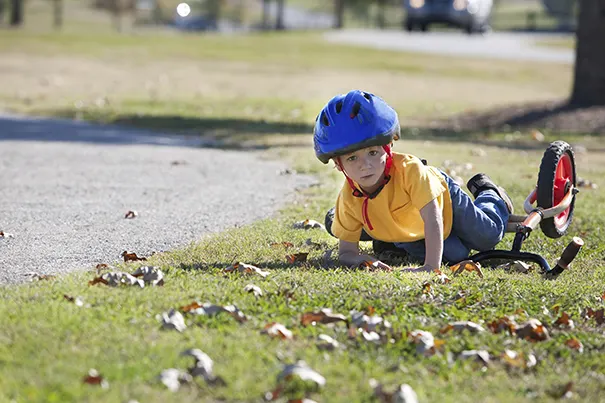Grazes, cuts and bruises: minor injury care
No matter how much we try to watch over our children and ensure their safety, it is inevitable that the average toddler, pre-schooler and school-aged kid will get a cut, scratch or abrasion from time to time. It is vital that parents and other caregivers understand when to seek medical attention and how to care for minor skin injuries.
Injuries that require medical attention include:
those that bleed continuously;
those that are large or deep;
wounds inflicted by possibly contaminated objects such as nails.
Caring for a wound
Start by using pressure
Stop the bleeding by applying firm pressure with clean gauze or cloth over the area for five minutes. If bleeding continues even after applying pressure, you should contact your child's doctor.
Cleanse the wound
Once bleeding has been controlled, the wound must be cleansed. Place the area under cool or lukewarm running water for a few minutes to flush away any small debris. You should avoid overly aggressive scrubbing and the use of iodine, alcohol or other antiseptic solutions on open wounds because they can be uncomfortable for your child. You can control the pain by giving paracetamol or ibuprofen by mouth, as needed. Remember to check with your healthcare provider before giving medicine to your child. Aspirin should always be avoided because, among other reasons, it may encourage bleeding.
Apply antibiotic ointment
After the area has been cleansed, apply an antibiotic ointment followed by a non-stick bandage. Change the bandage daily or whenever it becomes soiled or wet. Once the area appears to be healing well, the bandage can be removed and the area left open to heal. Should your child develop a fever or the wound site show redness or oozing, contact your healthcare provider. These signs may indicate an infection, which may require a prescription antibiotic.
In the A&E
Deep lacerations, which are linear tears or cuts of the skin, need to be treated by a medical professional. Most often this is done in the casualty department or urgent-care clinic.
What can you expect if your child needs such medical attention?
Cleansing
For starters, the area will usually be anaesthetised with some form of topical or injected medicine so there is no pain. The wound will then be cleansed, usually with cool water squirted into the area with a syringe, to remove any small debris.
Closing
The doctor will then decide on the best method of closing the wound. The standard method is to use stitches, staples or a medical adhesive depending on location and size of the wound. Staples and stitches are generally removed in one to two weeks.
A newer treatment, which can be used in wounds that are not too large or deep in locations without significant skin tension, involves the use of a tissue adhesive. This substance is applied to the cleansed wound edges and seals them like a super-glue for the skin. The advantages are that it is fast, there are no stitches to remove, and there are no marks left on the skin. Unfortunately, tissue adhesive cannot be used for all wounds.
Preventing or limiting scars
Here's how to minimise scarring:
Keep the wound covered during the early stages of healing. This will to help speed the growth of new skin.
It is vital to keep your child relatively inactive during the healing period. Have her avoid aggressive sports (especially contact sports) to decrease risk of further damage to the wound.
Control pain with paracetamol or ibuprofen to decrease stress and increase healing.
Ensure that your child is receiving adequate nutrition. Many vitamins, minerals and trace elements are important in the wound-healing process.
Remember to keep your cool, and your child will keep hers! Don't forget the power of a parent's kiss and nurturing love in healing any injury.

